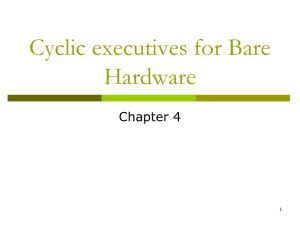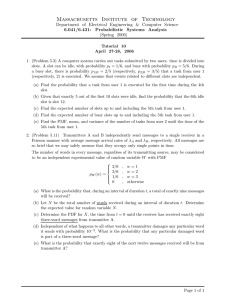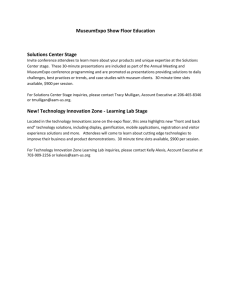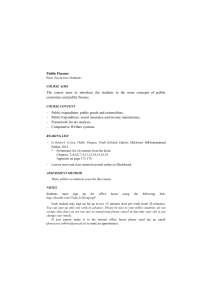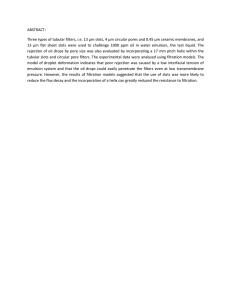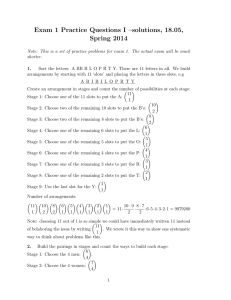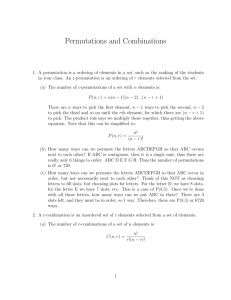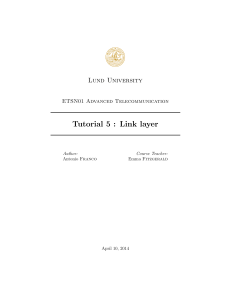Operations Research for TV and internet advertising
advertisement
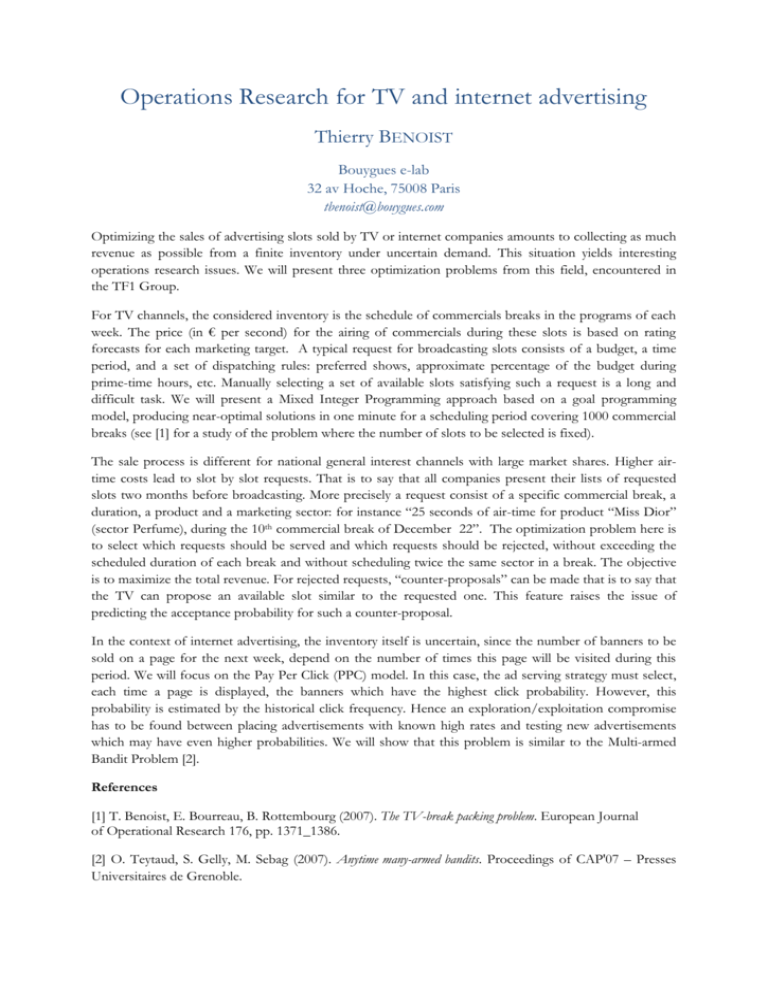
Operations Research for TV and internet advertising Thierry BENOIST Bouygues e-lab 32 av Hoche, 75008 Paris tbenoist@bouygues.com Optimizing the sales of advertising slots sold by TV or internet companies amounts to collecting as much revenue as possible from a finite inventory under uncertain demand. This situation yields interesting operations research issues. We will present three optimization problems from this field, encountered in the TF1 Group. For TV channels, the considered inventory is the schedule of commercials breaks in the programs of each week. The price (in € per second) for the airing of commercials during these slots is based on rating forecasts for each marketing target. A typical request for broadcasting slots consists of a budget, a time period, and a set of dispatching rules: preferred shows, approximate percentage of the budget during prime-time hours, etc. Manually selecting a set of available slots satisfying such a request is a long and difficult task. We will present a Mixed Integer Programming approach based on a goal programming model, producing near-optimal solutions in one minute for a scheduling period covering 1000 commercial breaks (see [1] for a study of the problem where the number of slots to be selected is fixed). The sale process is different for national general interest channels with large market shares. Higher airtime costs lead to slot by slot requests. That is to say that all companies present their lists of requested slots two months before broadcasting. More precisely a request consist of a specific commercial break, a duration, a product and a marketing sector: for instance “25 seconds of air-time for product “Miss Dior” (sector Perfume), during the 10th commercial break of December 22”. The optimization problem here is to select which requests should be served and which requests should be rejected, without exceeding the scheduled duration of each break and without scheduling twice the same sector in a break. The objective is to maximize the total revenue. For rejected requests, “counter-proposals” can be made that is to say that the TV can propose an available slot similar to the requested one. This feature raises the issue of predicting the acceptance probability for such a counter-proposal. In the context of internet advertising, the inventory itself is uncertain, since the number of banners to be sold on a page for the next week, depend on the number of times this page will be visited during this period. We will focus on the Pay Per Click (PPC) model. In this case, the ad serving strategy must select, each time a page is displayed, the banners which have the highest click probability. However, this probability is estimated by the historical click frequency. Hence an exploration/exploitation compromise has to be found between placing advertisements with known high rates and testing new advertisements which may have even higher probabilities. We will show that this problem is similar to the Multi-armed Bandit Problem [2]. References [1] T. Benoist, E. Bourreau, B. Rottembourg (2007). The TV-break packing problem. European Journal of Operational Research 176, pp. 1371_1386. [2] O. Teytaud, S. Gelly, M. Sebag (2007). Anytime many-armed bandits. Proceedings of CAP'07 – Presses Universitaires de Grenoble.
